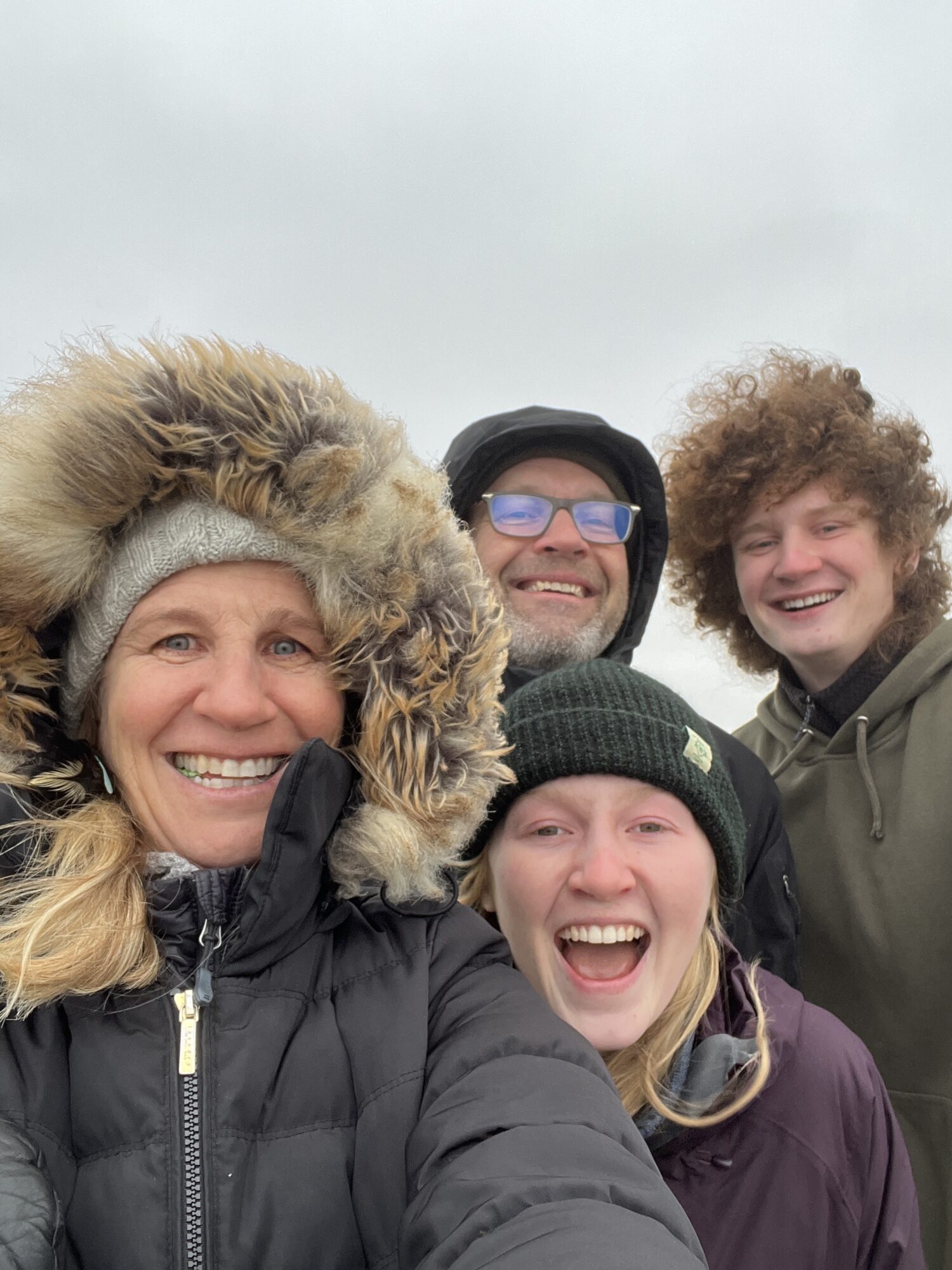Hello from Nebraska! For Spring Break, some go to Florida or Mexico, but this year we take our college-age children to North Platte, Nebraska to see the Sandhill Crane migration. Isn’t that every teenager’s Spring Break fantasy?
I’m just happy to have everyone in the car together. With Hazel graduating from High School in May, and Cole already in college, we will be empty nesters soon. I don’t know yet what that means for me; I feel both sad and excited about this new stage of life. What will my life be like? What will our marriage be like? What if our idea of romance is to fall asleep on the couch after watching TV?
All I know is that I want to savor each moment with our kids, even when all four of us, plus the dog, are packed into a small car. We drive 4.5 hours northeast, dodging tumbleweed and holding our noses past cattle feedlots.
Our daughter, who wants to study music, sings constantly at home and now here, in the backseat. She doesn’t seem to notice that she is doing it. Usually I’m the one who asks her to keep it down. But not today. Knowing she will be gone next year means that I’m happy to let her sing as often and as loud as she wants.
Our destination is the Ramada Inn in North Platte, just off I-80, next to a gas station, a Burger King, and the largest rail yard in the world with over 10,000 train cars moving through it each day. I’m excited to have everyone under one roof, even if it is the Ramada’s.
We book 3 birding tours with Dusty Trails, which is the owner’s name, not just a description of the landscape. The first tour is at dawn to visit the ceremonial dancing grounds of the Prairie Chicken. We save the cranes for Day 2. Can’t have all the fun at once!
We wake at 4 am to pile into a yellow school bus with other tourists from across the country. It is dark and freezing out. There is also a biting wind that makes the subzero temperatures feel even colder. The bus is driven by Dusty himself.
Dusty raises horses and cattle, organizes bird tours and, in his free time, takes care of the local cemetery. He grew up south of Sutherland, Nebraska. “Behind that power plant is where we used to play and look for ducks.” His mom delighted in preparing breakfast for his clients, but as she aged, she quit making eggs and now makes origami cranes for each of us. “She hasn’t learned how to make an origami prairie chicken yet,” Dusty apologizes.
Prairie Chickens, also known as Boomers, are seventeen inches long and weigh about 2 pounds. They are chubby birds with short legs and a short tail. Every spring, male Boomers gather at dawn on a lek, a ceremonial dancing ground, which is a little bare knob of grassland. It is absolutely unremarkable except at sunrise come springtime.
Dusty parks the bus, and turns off the engine. It is pitch black outside. We open the windows, pull our hats on tighter, and bury ourselves in sleeping bags to stay warm. Then we wait. The minute the sun rises, ten male Prairie Chickens gather in the lek for a dance-off. I watch my sleepy teens’ eyes open and their faces break into wide smiles. The male Prairie Chickens compete for the females attention by stamping their feet in a frenzy with their pinnate feathers flipped up to look like horns and their bright orange throat sac making a sound like blowing across a pop bottle.
Meanwhile, the females walk nonchalantly by the males, looking unimpressed. Ultimately, females choose to mate with the bird that is not the biggest or the brightest, but the best dancer. It’s a page right out of Patrick Swayze’s playbook. Two hours pass while we watch, mesmerized by this funny ritual. But now the birds are lying down, exhausted. It’s time to go.
On our way back, we notice that someone has placed work boots on the tops of fence posts for miles. Dusty explains, “We do that around here because if you’re ever caught in a snowstorm, the toes point your way home.”
Our second tour is to see the Sandhill Cranes at dusk on the North Platte river.
Sandhill Cranes winter in Mexico. Then every March, around 500,000 birds land in Nebraska to feed and gain energy for the rest of their journey. When they take off again in April, they fly over 400 miles a day until they reach their breeding grounds in Alaska or Siberia.
We watch the cranes from a blind. To get a sense of their size, imagine a bird with a 6-foot wingspan, and the fact that juveniles are called colts. But because the birds wait for darkness to return to the river to roost each night, we hear them better than we see them. They sound like hundreds of thousands of frogs singing. When they fly first above us, then next to us, then all around us, it feels like the air itself is making music.
On our third tour, we wake again at 4 am to look at the cranes at sunrise from a blind. The kids rise out of bed faster than I expect. In the cold, dark air, we wait and listen. Kurt suggests that maybe next year, just the two of us could go to North Dakota to see the Sharp-Tailed grouse mating dances. I’ve never heard anything so romantic.
In a breathtaking moment, the cranes lift off the river and take to the air. It’s a deafening chorus of wingbeats and crane song.
But once the cranes leave the river, the show is over. Everything is quiet. Dusty’s assistant is excited to show us a Great Blue Heron rookery on the way out, but the giant nests are empty. I’m suddenly sad that the cranes and herons are gone, that this trip will be over soon, and that our kids will migrate away from us too soon as well.
While I know that everything’s meant to move or fly, I’ve been imagining our kids’ absence and struggling a bit. The thing about these birds is their sound, a kind of music. When our daughter leaves, it might feel like someone has turned off the music. I’m not looking forward to that.
Here in Nebraska, I try to remember that migration is the natural order. The birds, the trains, the children we raise; they are all meant to move on and away. In a gift shop, a sign gives advice from the Sandhill Cranes, “Spread your wings. Have a good sense of direction. Keep your head high. Go the distance.”
Yet maybe I’ll start placing boots on fence posts, so our kids can look and see how the toes point their way home.
Love,
Susie

